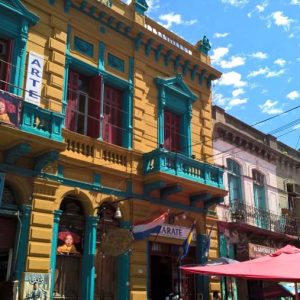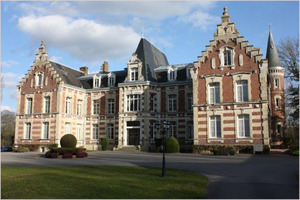 Just 20 minutes’ drive from Calais, Chateau Tilques has long been a favourite with British travellers for its attractive neo-Flemish facade, wooded park and gastronomic restaurant. Fortunately, it’s also a favourite with the French, not to mention travellers from Belgium and the Netherlands. All of which makes for a pleasantly international atmosphere.
Just 20 minutes’ drive from Calais, Chateau Tilques has long been a favourite with British travellers for its attractive neo-Flemish facade, wooded park and gastronomic restaurant. Fortunately, it’s also a favourite with the French, not to mention travellers from Belgium and the Netherlands. All of which makes for a pleasantly international atmosphere.
Our spacious ‘Luxe’ room in the main house had big windows overlooking the tranquil rear lawns and lake, and furnishings that were comfortable rather than grand. My favourite feature, just off the private entrance hall, was the ultra-modern shower room, neatly fitted into a compact circular tower. Some of the hotel’s 51 rooms are in an annexe close to the indoor pool and spa (book treatments in advance to avoid disappointment).
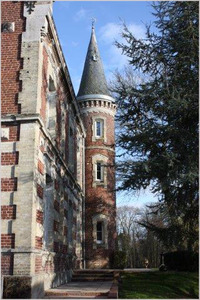 The restaurant at Chateau Tilques is also in a separate building just across the drive – umbrellas available in inclement weather. Despite its barn-like proportions, it manages to be a surprisingly intimate space, divided by half-walls into smaller sections and with tables well-spaced. Choose from fixed price menus, with choices, or a la carte, and expect tasty little extras like home-made canapes with drinks and amuse-bouche mouthfuls before the starter.
The restaurant at Chateau Tilques is also in a separate building just across the drive – umbrellas available in inclement weather. Despite its barn-like proportions, it manages to be a surprisingly intimate space, divided by half-walls into smaller sections and with tables well-spaced. Choose from fixed price menus, with choices, or a la carte, and expect tasty little extras like home-made canapes with drinks and amuse-bouche mouthfuls before the starter.
We stayed two nights in spring and were impressed by the quality and variety of the cuisine which features classic French dishes with seasonal produce and the occasional international twist. There are regular themed evenings here too, but we didn’t hear a note of the rock music evening taking place in a distant function suite during our stay.
Criticisms? We found the bar area a little lacking in atmosphere but in summer, there’d be no problem finding a quiet corner of the garden to sip your aperitif. The staff were excellent – friendly, efficient and largely bilingual – and although we were aware of guests walking up the staircase close to our bedroom, once everyone was settled, the hotel’s rural position ensured a good night’s sleep.
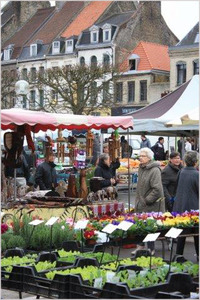 Guests at Chateau Tilques enjoy a 20% discount at St Omer golf club as well as being able to play tennis at the hotel and hire bikes. But it would be a shame to come here and not explore the local area. If you love old cars and don’t mind a lively ride, you can even travel by classic 2CV, available to hire from nearby Clairmarais.
Guests at Chateau Tilques enjoy a 20% discount at St Omer golf club as well as being able to play tennis at the hotel and hire bikes. But it would be a shame to come here and not explore the local area. If you love old cars and don’t mind a lively ride, you can even travel by classic 2CV, available to hire from nearby Clairmarais.
St Omer itself is packed with history – pop in the Tourist Office for information in English – and the Saturday morning market fills the main square and surrounding streets with scent and colour.
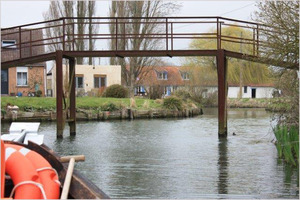 Our favourite local attraction was the excellent Maison du Marais, a brand new interpretation centre for the Audomarois marshes, a UNESCO-listed wetland on the edge of Saint-Omer around the river Aa (pronounced Ah-Ah). This unique area was originally dug out by monks and enlarged across the centuries. Today it’s a mix of natural environment and market gardening, producing 50 varieties of vegetable and home to an impressive list of wildlife including 232 species of birds, 100 species of butterflies, 42 mammals and 25 different fish.
Our favourite local attraction was the excellent Maison du Marais, a brand new interpretation centre for the Audomarois marshes, a UNESCO-listed wetland on the edge of Saint-Omer around the river Aa (pronounced Ah-Ah). This unique area was originally dug out by monks and enlarged across the centuries. Today it’s a mix of natural environment and market gardening, producing 50 varieties of vegetable and home to an impressive list of wildlife including 232 species of birds, 100 species of butterflies, 42 mammals and 25 different fish.
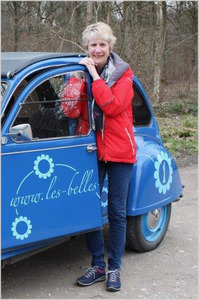 Some 40km from the sea, the marshes include 170km of waterways and for a handful of euros, you can take a guided excursion from the discovery centre in a traditional bacove or flat-bottomed boat with an English-speaking guide. We saw marsh buzzards, kingfisher, and herons, and found out about a unique way of life where 100 people still live on tiny islands and the local postman is the last one in France to deliver the mail by boat.
Some 40km from the sea, the marshes include 170km of waterways and for a handful of euros, you can take a guided excursion from the discovery centre in a traditional bacove or flat-bottomed boat with an English-speaking guide. We saw marsh buzzards, kingfisher, and herons, and found out about a unique way of life where 100 people still live on tiny islands and the local postman is the last one in France to deliver the mail by boat.
The Maison du Marais puts the landscape into context with the use of atmospheric film, models, exhibitions and photographs. Labels are in English and braille, and the exhibition space is easily navigable by wheelchair or visitors with buggies.
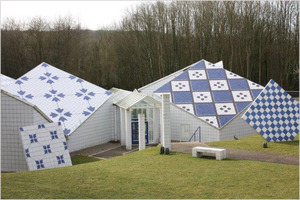 Lovers of military history will also enjoy La Coupole, a unique site of a very different sort. Tucked beneath a cliff on the south side of Saint Omer, this vast domed bunker was built as a launch bunker for V2 rockets trained on London. Discover the full story; learn how German rocket technology advanced the American space programme; and watch 3-D films in the planetarium.
Lovers of military history will also enjoy La Coupole, a unique site of a very different sort. Tucked beneath a cliff on the south side of Saint Omer, this vast domed bunker was built as a launch bunker for V2 rockets trained on London. Discover the full story; learn how German rocket technology advanced the American space programme; and watch 3-D films in the planetarium.
I’d also recommend heading west towards the coast and stopping at Desvres where the newly revamped Ceramics Museum provides a wonderful overview of the industry that gave the town an international reputation. Today there is just one commercial producer left, but the craftsmen at Desvres were masters at copying any style of ceramics from any corner of the globe. Anyone addicted to television antiques and collectables’ programmes won’t want to miss seeing their handiwork in this charming and informative museum.


